Shogayaki, a popular Japanese dish bursting with flavours and aromas, is a true culinary delight. This delectable stir-fry features marinated and thinly sliced pork cooked in a savoury ginger-soy sauce seasoning. The result is tender and succulent grilled meat that melts in your mouth. Shogayaki’s simple yet rich combination of ingredients creates a delicious balance of sweet and tangy notes that pairs perfectly with rice and vegetables. This traditional Japanese dish is a favourite amongst Japanese people and is sure to become a go-to dish for you too!
Table of contents
What is Shogayaki?
Shogayaki is a popular Japanese home-style cooking stir-fry dish that combines the savory taste of meat with the aromatic and slightly spicy flavour of ginger. It consists of thinly sliced pork cooked in a flavourful savoury-sweet ginger sauce made of soy sauce, ginger, sake, and mirin. The word “shoga” means ginger and “yaki” means grill in Japanese, hence the dish’s name. Shogayaki most often uses pork, however beef or chicken can also be used.
Ingredients
The ingredients used to make shogayaki are simple yet essential in creating the delicious taste and aroma of this dish.
- Pork: Shogayaki traditionally calls for thinly sliced pork such as pork loin or pork belly. The thin slices cook quickly and absorb the flavours of the sauce, resulting in tender and juicy meat.
- Ginger: As the name suggests, ginger plays a crucial role in shogayaki’s flavour profile. It adds a warm and slightly spicy kick to the dish while infusing it with its unique fragrance.
- Sake : Sake not only adds depth and richness to the shogayaki sauce but also helps tenderise the meat and removes any gamey flavour.
- Katakuriko potato starch : Sprinkle a thin layer of this on the surface of the meat before grilling to prevent it sticking to the pan. Katakuriko also allows the sauce coat the pork easily and well.
- Ginger Sauce: grated ginger, soy sauce, mirin (sweet rice wine), sake, sugar, ketchup, sesame oil
- Cooking Oil: A neutral-flavoured cooking oil like vegetable oil or canola oil is typically used.
- Garnish (optional): To add some colour and freshness to your shogayaki, you can garnish it with chopped green onions or toasted white sesame seeds before serving.
These ingredients come together harmoniously to create an incredibly tasty Japanese classic – shogayaki! Experimenting with different cuts of pork or adding additional vegetables like bell peppers or mushrooms can bring more variety to this dish while still maintaining its authentic flavours.
How to Make Shogayaki
Shogayaki is a staple home cooking dish because it’s so flavourful and delicious but also very simple.
- Prepare the Sauce : In a small bowl, combine all ginger sauce ingredients. Stir well until the sugar dissolves completely.
- Marinate the Pork Slices : Place the pork slices in a shallow dish or zip-lock bag. Pour sake and ginger juice over the pork and massage it with your hand, ensuring that each slice is coated evenly. Set aside for about ten minutes to allow marination.
- Heat the pan : Heat two tablespoons of vegetable oil in a large skillet or a large frying pan over medium-high heat until hot but not smoking.
- Cook the Pork Slices : Add the marinated pork slices to the pan in a single layer, ensuring they do not overlap. Cook for about one minute on each side until browned and slightly crispy around the edges. Note: You may need to cook them in batches if your pan isn’t big enough to accommodate all at once.
- Adding the ginger sauce : Remove the cooked pork slices from the frying pan and add sliced onion to cook. Once the onion is cooked, add the ginger sauce to the frying pan. When the ginger sauce has thickened, place the pork back to the frying pan and coat the sauce evenly on to the pork.
- Serve and Garnish : Serve and garnish your shogayaki with finely chopped scallions or sprinkle sesame seeds on top for added flavor and visual appeal.
Tips for Making Shogayaki
- Choose the Right Cut of Meat: When making shogayaki, opt for thinly sliced cuts like pork loin or beef rib-eye. These cuts are ideal as they cook quickly and absorb flavours effectively.
- Make the marinade by mixing sake and ginger juice, and marinating the meat with your hands for about 5 minutes to soften the meat. The use of sake and fresh ginger prevents the proteolytic enzyme from binding proteins tightly together, thus tenderizing the meat. However, if the meat is marinated in the sauce for too long, the osmotic pressure caused by the salt content of the soy sauce will cause the meat juices (umami) to seep into the sauce, so it is necessary to be careful about the time of marinating.
- Add ketchup to the ginger sauce: Ketchup is a secret ingredient that adds sweetness, sourness and umami because of the glutamic acid it contains (a flavor component of umami).
What to Serve with?
If you are wondering what to serve with shogayaki, here are some fantastic options that will complement the flavours of this dish:
- Plain cooked Rice: Shogayaki pairs perfectly with plain cooked white rice. The simplicity of the rice allows the rich flavors of the ginger pork to shine.
- Miso Soup: A bowl of hot miso soup makes a great accompaniment to shogayaki. Its savory umami flavor complements the sweetness and spiciness of the shogayaki.
- Vegetables: Serve some vegetables on the side for added crunch and tanginess. Popular choices include cucumber sunomono, Asian cucumber salad, Yuzu daikon, or Namasu pickled daikon and carrots.
- Shredded cabbage : a popular and traditional accompaniment is shredded cabbage. This crunchy and refreshing vegetable not only provides a contrast in texture but also helps balance out the flavors of the savoury shogayaki.
- Japanese potato salad: Rich mayonnaise in the Japanese potato salad goes well with the ginger sauce.
- Tsukemono (Japanese Pickles): Include an assortment of tsukemono such as takuan (pickled daikon), umeboshi (pickled plum), or gari (pickled ginger) for a refreshing side.
- Chawanmushi: If you want to elevate your meal, consider serving a delicate chawanmushi – a savory steamed egg custard dish. Its smooth texture and subtle flavors complement the boldness of shogayaki.
Great for Bento Box
Shogayaki is not only delicious but also perfect for a bento box. Whether you’re packing lunch for work or school, shogayaki can be a great addition to your bento box due to its versatility and ease of preparation. One of the main reasons shogayaki is ideal for a bento box is its ability to taste great both hot and cold. The flavors of tender pork slices marinated in a savory ginger sauce develop even more after they have been in refrigerator, making it an excellent choice for those who prefer cold lunches.
FAQ
A : While these two dishes share some similarities, they each possess unique characteristics that set them apart in terms of taste and preparation techniques. Shogayaki is a classic Japanese dish consisting of thinly sliced meat (typically pork) marinated in a ginger-based sauce and stir-fried until tender. Teriyaki refers to a cooking technique where meat or fish is grilled or broiled with a glaze made from soy sauce, mirin (sweet rice wine), sugar, and sake.
A : In general, pork loin, shoulder loin, and pork belly are used. In the case of pork loin, the meat is relatively soft, and shoulder loin has a chewy finish compared to pork loin.
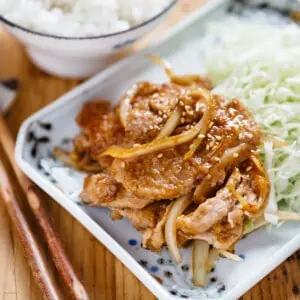
Shogayaki
Ingredients
Ginger Sauce
- 1 grated ginger about 5 cm
- 1 tbsp mirin
- 1 tbsp sake
- 1 tbsp soy sauce
- ½ tbsp sugar
- 1 tsp ketchup tomato sauce
Pork
- 200 g pork loin
- ½ tbsp ginger juice
- ½ tbsp sake
- 1 tbsp katakuriko (potato starch)
Other
- 1 tbsp vegetable oil
- 1 tsp sesame oil
- ½ sliced onion
- 2-3 leaves of Cabbage very thinly shredded
Instructions
- In a small bowl, combine all ginger sauce ingredients. Stir well until the sugar dissolves completely.
- Slice the pork thinly if necessary and cut the connective tissue. Marinate them in ginger juice and sake by massaging the seasoning into the pork by hand, then leave it for 10 minutes. *1
- Remove excess marinade off the pork using kitchen paper towel if necessary, and sift a thin layer of katakuriko on the pork surfaces.
- Heat a tablespoon of vegetable oil in a large skillet or a large frying pan over medium-high heat until hot but not smoking.
- Add the pork slices to the pan in a single layer, ensuring they do not overlap. Cook for about one minute on each side until browned and slightly crispy around the edges.
- Remove the cooked pork slices from the frying pan and add 1 tsp of sesame seed oil and sliced onion to cook.
- Once the onion is cooked, add the ginger sauce to the frying pan.
- When the ginger sauce has thickened, place the pork back to the frying pan and coat the sauce evenly on to the pork.
- When the sauce has coated all the pork and become shiny, turn the heat off.
- Serve the pork with shredded cabbage on a plate.
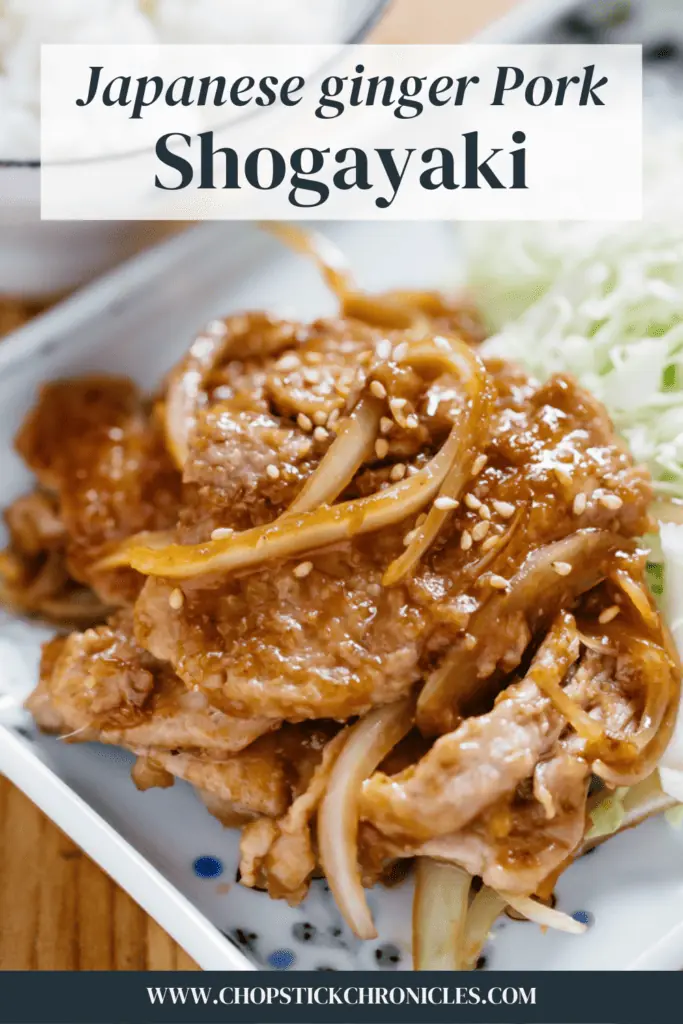
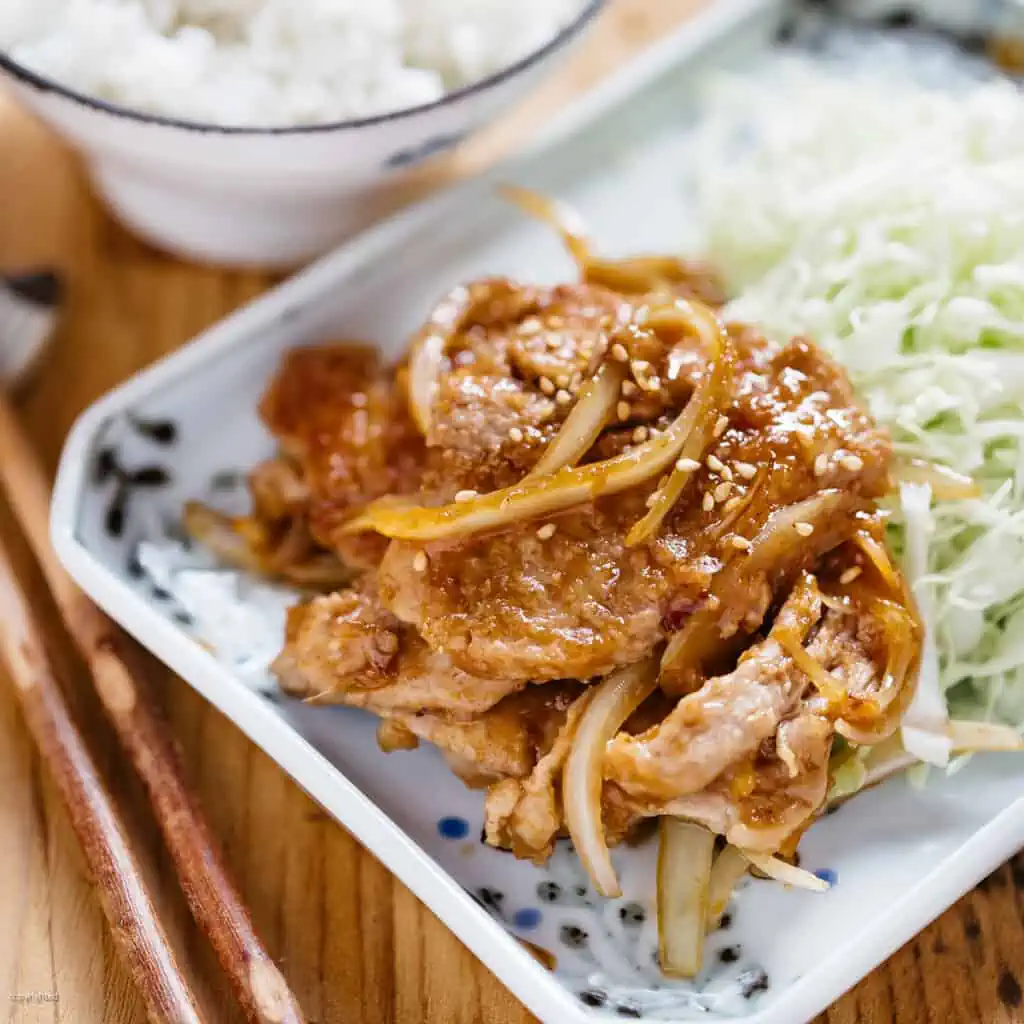
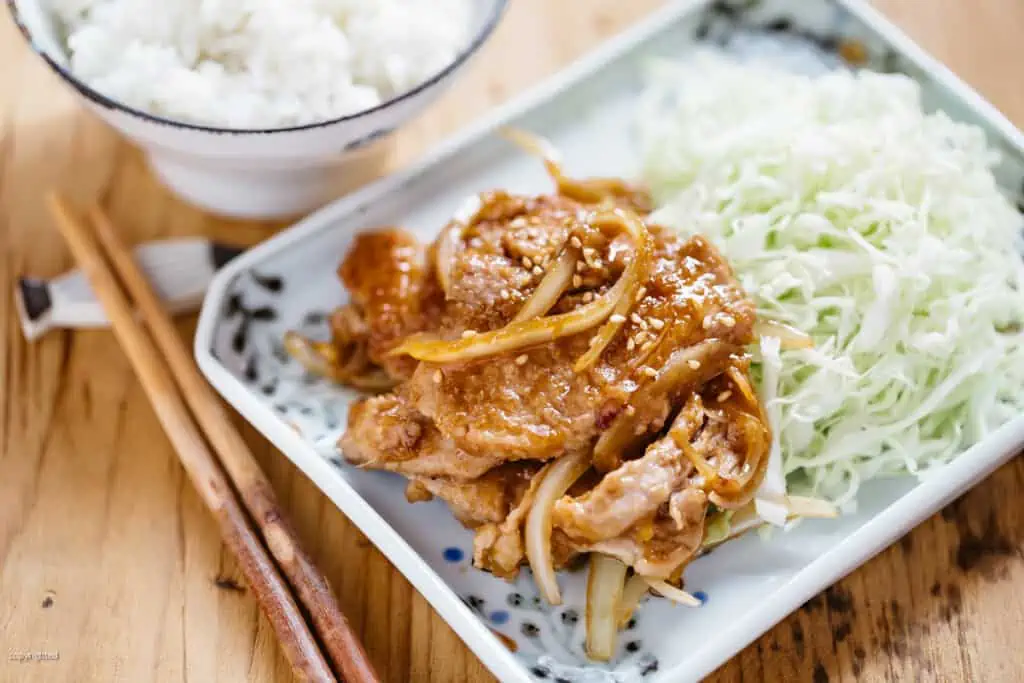
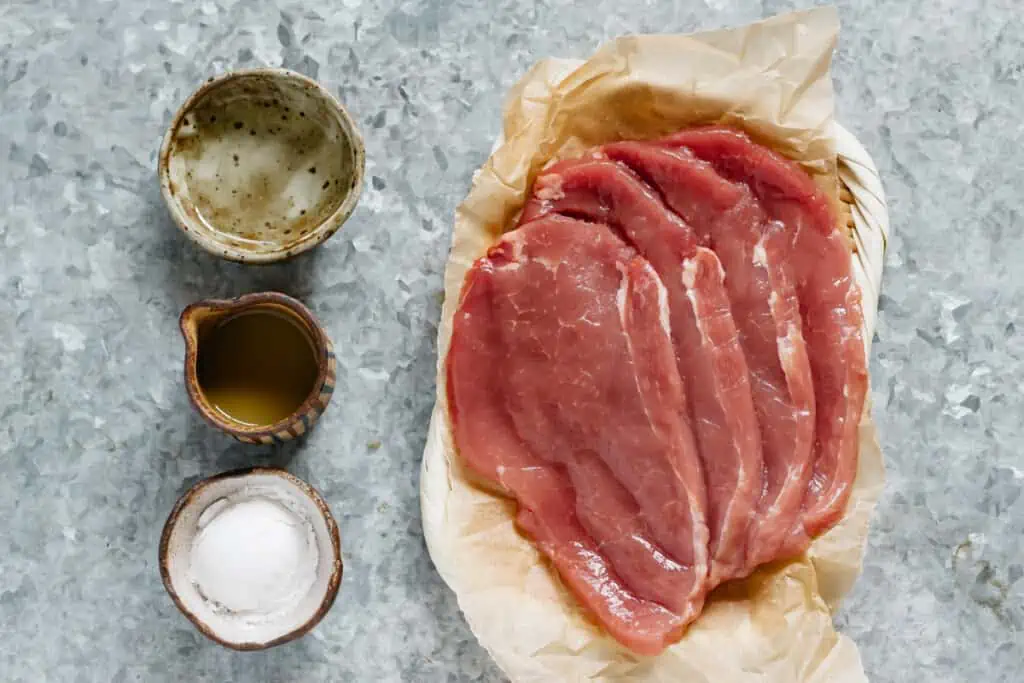
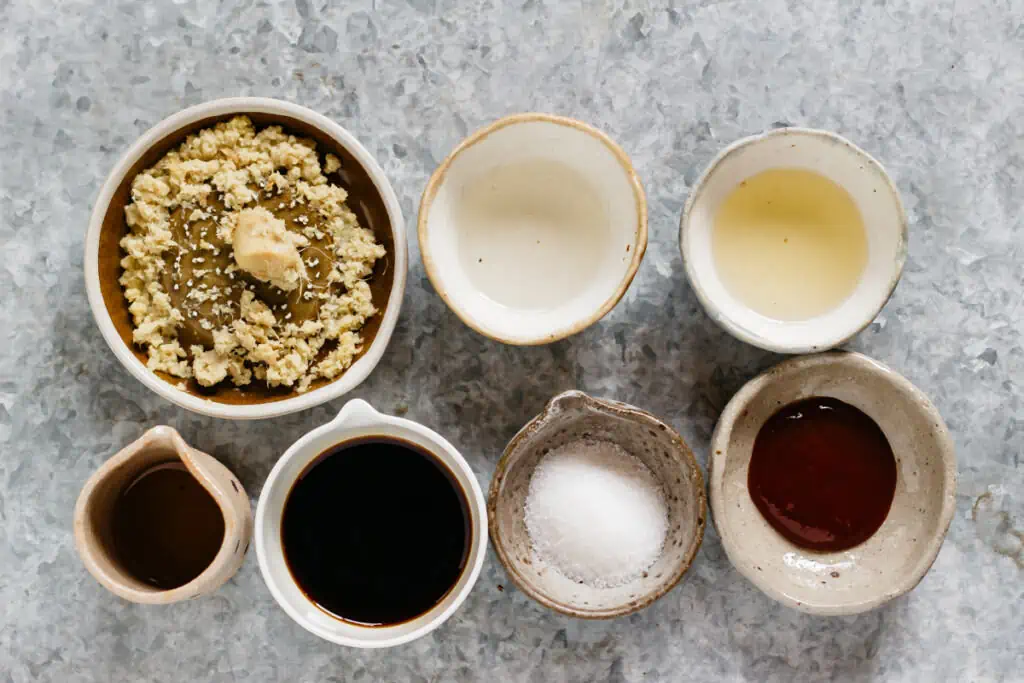
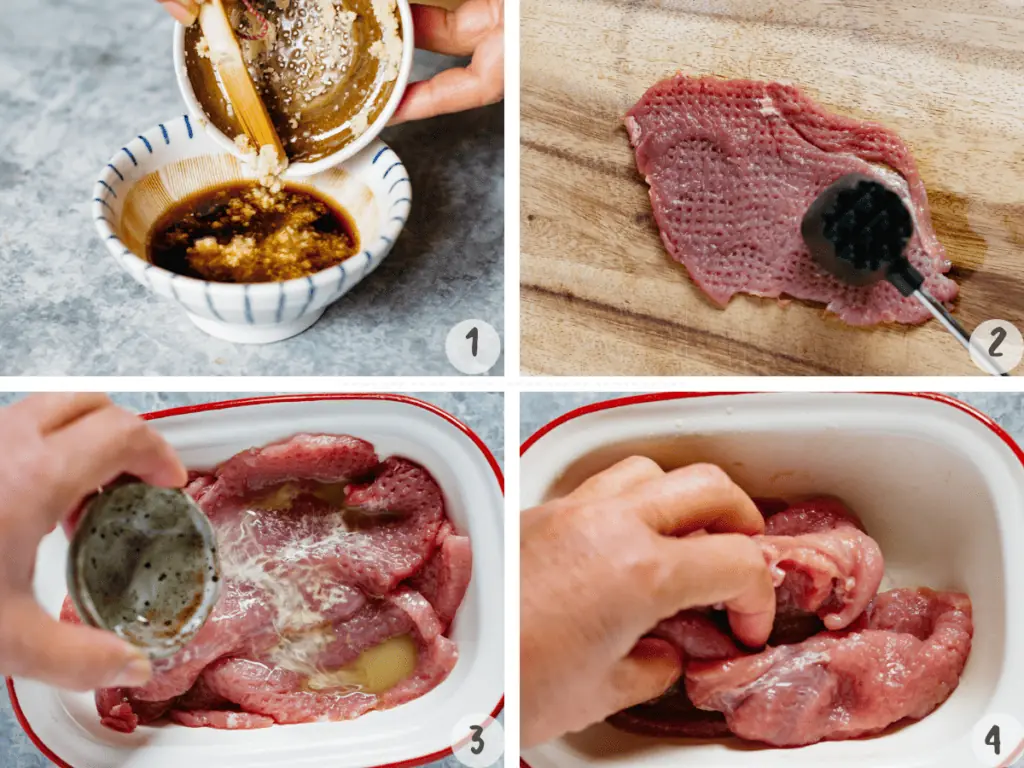
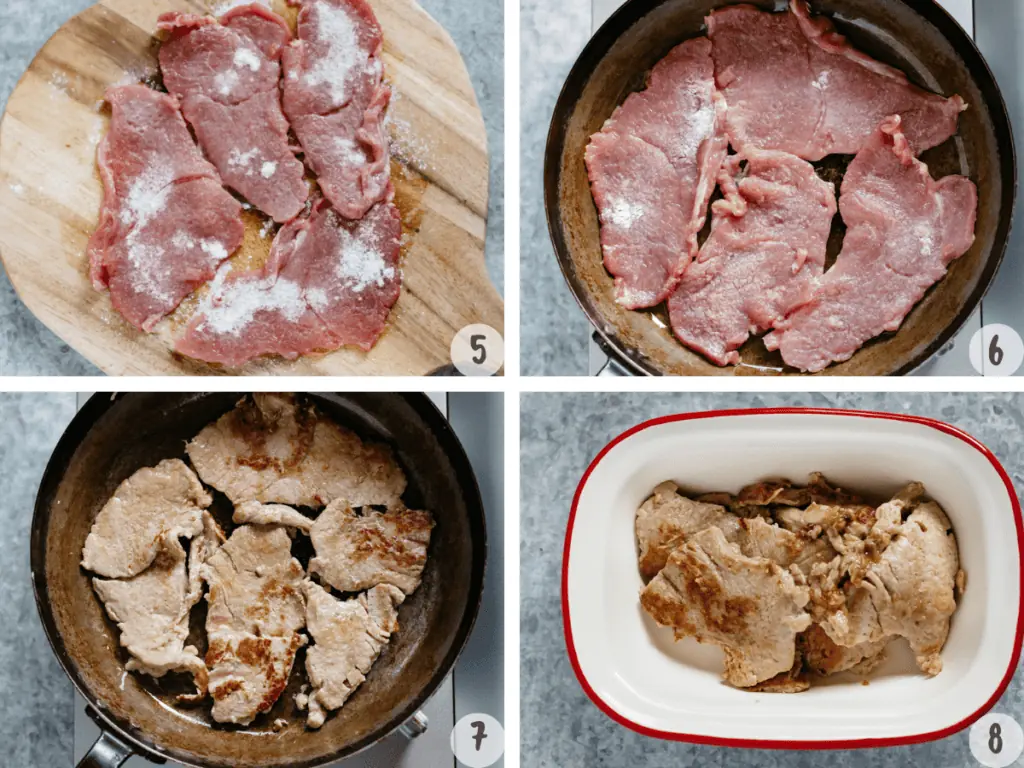
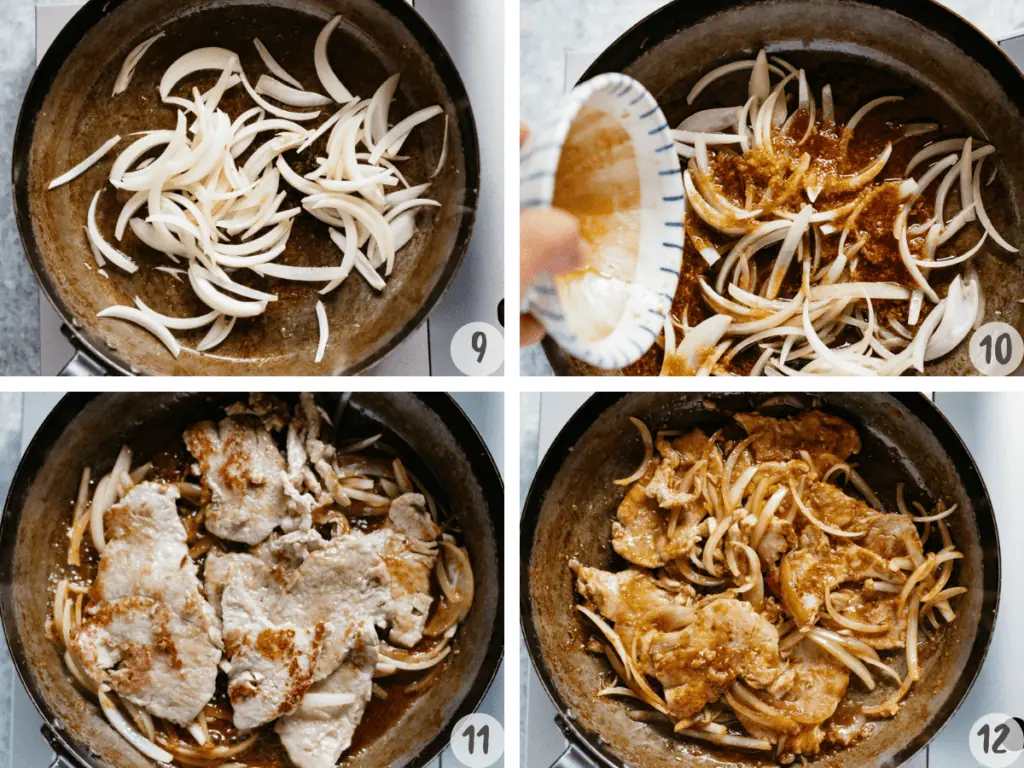
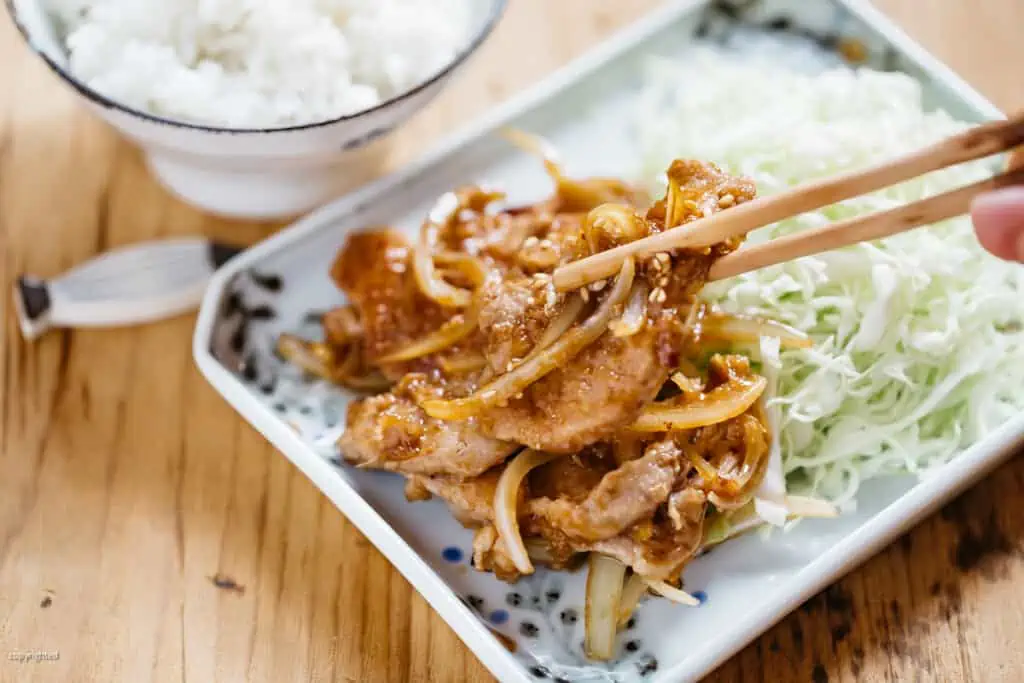
When do I use the ½ tbsp sugar and ginger?
Hi Gregory, step 3 when you combine all sauce ingredients 😀
What method do you use to squeeze the juice from the ginger?
Thank you
Hi Kimiko, I grate ginger and then squeeze juice out.
I love it amazing recipe!
thank you 😀
Is ginger juice something you can buy or just try to squeeze it from fresh ginger?
Hi Charlene, I squeezed it from fresh ginger. I have never seen ginger juice at any shop.
Ok thank you so much – I will try it soon
on dec 9 2016 jerry ask a couple of questions and on dec 12, 2016 you answered don’t understand about fresh ginger and discard you discard if you use fresh ginger and don’t if you use juice? also the recipe states on line 2 mix all sauce ingredient’s {which ones) then line 4 says combine all sauce ingredients (now which ones) looks good cant wait the try john
Hi John, Thank you for visiting. I have just realised that many people are looking at this recipe because of Buzzfeed?! and I just looked at the recipe again. Thank you for your clarification. I fixed the recipe card. The recipe was a little confusing wasn’t it? You mix mirin, sake and ginger juice and marinate pork in them for 10-15 minutes. Then combine soy sauce, sugar and tomato sauce together and add 1tbs of mirin sake and ginger mixture that you marinated the pork. Sorry, I should have stated specific ingredients to combine…. Hope that the recipe is better and easy to understand. Please let me know if it does not make sense. Thank you and hope you enjoy this delicious Japanese pork dish 😀
Hi Shihoko,
It just may be how the recipe comes up on my phone, but for onions on the ingredients list it says “/2 onions” is that 2 whole onions?
Thanks,
Stacey
Hi Stacey, thank you for letting me know about the recipe. It should be 1/2 (half). I will fix it now. Thank you 😀
Thanks! Looking forward to making it 🙂
Sorry, Shihoko, typo. 🙂
Hi Shiroko, I made the pork shogayaki, but it came out a bit bland. Could have been because I used low-salt soy sauce. I have a couple of other questions: what do you do with the fresh ginger, do you add it to the sauce or to the marinade? When you fry the meat, do you add the meat and marinade to the pan, or just the meat and discard the marinade? Many thanks.
Hi Jerry, sorry for late reply. I think using low-salt could be one reason for that blandness. With fresh ginger, you can marinade with ginger but better to take those ginger segments because it burns easily. So when you cook, better to use ginger juice. I don’t discard, try not discard anything but for this one, I do. Hope my answers help.
Many thanks fr the reply. I will start using regular soy sauce and will probably increase the amount of fresh ginger as well. I hope you enjoy Germany. It’s getting colder and wetter, but we probably won’t have snow before Christmas. We live in Munich.
I agree — this looks delicious. But what kind if cabbage should Inuse for the shredded cabbage?
Hi Mimi, Thank you for visiting. Any cabbage will do, but I usually use just audinary cabbage like in the photo. You can also use Chinese cabbage too if you prefer 😀
Your Shoga-Yaki recipe looks delicious and easy to prepare.
I’ll try the recipe but first need to convert to U.S. measurements.
Hi Doug, I’m enjoying having some Aussie bloggers to follow because I’m always having to convert US recipes since I live in QLD, Australia 🙂 Thanks for the recipe Shihoko, it and the blog looks great.
Thank you Sue! 😀
Hi Doug
Thank you for your comment. I have leant something from your comment. I will try to put U.S.measurements in posts in the future 😀 Thank you!
I think you have a large readers of your blog from the U.S.
So.. it’d be helpful if you have both types of measurements in your recipe.
Doug, yes you are right. I really appreciate your comment which made me realise measurements difference 😀
Shihoko-San
Do-mo, Arigato-Gozaimasu !
By doing so… you’ll satisfy both segments of your blogers.
Kochirakoso, Doug san. Arigatougozaimasu 😀